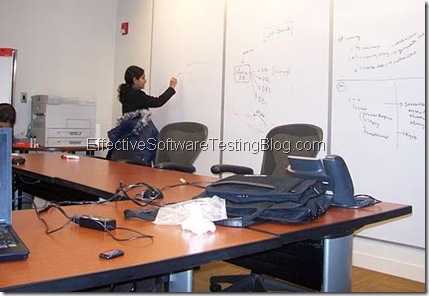Ok, before I start talking, let me make one thing clear - I am not the best public speaker I know. But 9 out of 10 times, I am able to communicate my ideas across to other individuals or groups. So I am going to share what goes inside my brain when I am writing (emails, blog posts, test cases, defect reports) or making PowerPoint presentations or addressing a crowd.
In all these activities I am thinking "here's what you should know at the end of this conversation / email / whatever" not "this-is-what-I-want-to-say". The focus is "you", not "me".
In all these activities I am thinking "here's what you should know at the end of this conversation / email / whatever" not "this-is-what-I-want-to-say". The focus is "you", not "me".
- It helps me go to the level of my juniors as well as seniors or a mix of both these folks.
- It helps me project things in the dimensions my audience can relate to.
- It helps me connect to each individual even when I am speaking to a crowd.
- Yes, I am nervous before any public speaking opportunity, but I view it as just that - an "opportunity" to speak to many "individuals". When I am standing up there and my brain goes "OMG! All these people are staring at me, judging me", I am able to snap out of it by talking to one-person-at-a-time.
- Similarly while writing presentations or defect reports, I am thinking about the consumers of the same. How can my defect report help the developer get to the problem quickly and fix it? How can I make the idea clear and acceptable to the viewers? If I were on the other side of the table, what are the questions I would like to ask.
- This getting out of my head also helps me stay or at least appear calm.
Is there anything else that you do when you are in a similar situation? What's your favorite public speaking tip? I'm looking forward to hear. :)
As always, thanks for dropping by and do let me know your thoughts. Your kind words of encouragement and wisdom mean a whole lot to me!

